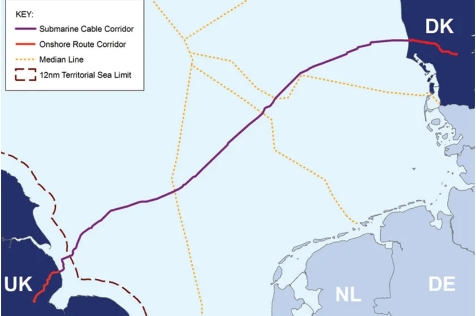
Viking Link is the largest HVDC interconnector in the world. Or in other words, the longest electrical cable, 765 km long and connecting the electrical networks of the United Kingdom and Denmark. This is a high-voltage submarine cable, buried in the seabed, which will have the future capacity to power 1.4 million British homes from Danish wind energy. A fast and flexible way to share energy between two countries, and that allows you to respond quickly to changes in electricity supply and demand.
Currently there are more than 400 submarine cables that run 1.3 million kilometers around the planet; However, the Viking Link has the peculiarity of being the longest of its class, with the ability to move energy from one end of the cable to the other. There are cables that cross, for example, the Atlantic Ocean, but they are for telecommunications.
The project that has given life to the Viking Link has been important. After 2 billion euros of investment and more than 3 million hours of work, it has been the result of collaboration between the British National Grid and the Danish operator Energinet. In addition to the cable, converter stations on both sides of the North Sea are included.
This is, by the way, one of the shallowest seas, which has also been a challenge in carrying out the installation of the cable, due to all the protection measures that had to be taken into account to avoid possible damage. The cable itself is made of copper, steel, paper and plastic.
Initially it will have a working capacity of 800 MW, but it is expected to reach 1,400 MW when it is operating at full capacity by the first quarter of 2025. Its main objective will be to balance supply and demand fluctuations in the electrical networks of both countries. With the push of a button, power changes direction from an area that has excess electricity to another that needs it.
An engineering work that is fundamental for future energy needs and that will continue beyond this cable, which connects Bicker Fen, in Lincolnshire, to Jutland, in Denmark. An electric superhighway that will be very little if we look at the plan that is being carried out on the other side of the world: the Australia-Asia Power Link will connect the oceanic country with Indonesia and Singapore, with a length that is estimated to exceed 4,000 kilometres.
For National Grid, for its part, the “Viking cable” is the sixth interconnector to leave the United Kingdom. The British already have other operational cables that link the islands with France, twice, Norway, Belgium and the Netherlands.
Thanks to all of these, National Grid’s interconnection capacity will soon reach 7.8 GW, with the capacity to power 8 million homes. It is estimated that by the end of the decade, all its interconnectors will have helped avoid some 100 million tons of CO2 emissions.